Grass supply was never as high for the time of year on Greenfield Farm. The farm grass cover this week was 1,223kg, with a growth rate of 14kg per day recorded.
While grazing was tricky enough for a couple of days this week, with wet weather at times, it wasn’t wet enough to prevent grazing.
Given the grass supply and the intention to get 30% of the farm area grazed by the end of February, David has 90 cows out grazing in two groups – a March-calving group and an April-calving herd.
As one farmer queried this week, getting dry cow minerals in is more difficult when dry cows are out in paddocks. David is keeping any cows near calving (springing down within two weeks of calving) on the stand-off pad and there they have access to grass silage and dry cow minerals.
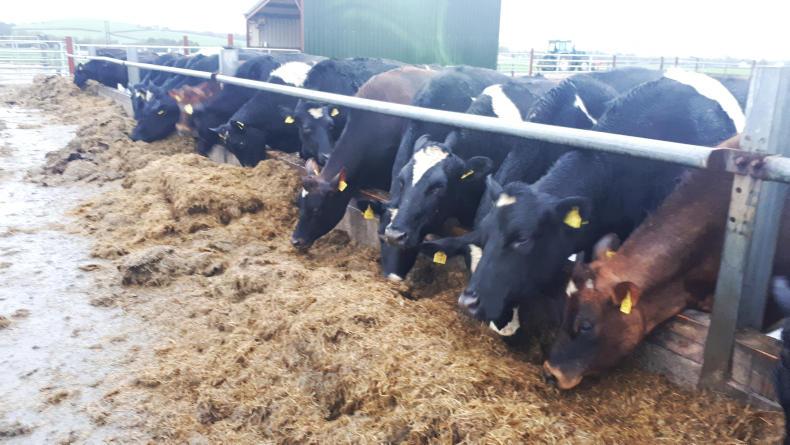
Dry cows near calving on silage at the Greenfield Farm in Kilkenny.
Some farmers I know are feeding dry cow minerals in tubs out in the field or else walking in dry cows and feeding them on a concrete base near the yard.
Another farmer had 12in corrugated drainage pipe cut in half and was bringing the dry cows on to the farm roadway near where they were grazing and feeding dry cow minerals with a kilo of oats to get them to eat it up.
Calving
In general, calving is going very well. David had a higher number than normal of stillborn calves early in the calving period – about 7%. His investigation so far seems to be related to the fact that the dry cows were on palm kernel at the rearers to replace a shortage in forage. Some reports suggest cows near calving should not be fed palm kernel.
There are about 190 cows calved, running about 35 cows less than the same period last year. Compared to 2018, milk deliveries are back about 12,000 litres for February to date. To the same date (21 February, 2018) last year there were 27,000 litres delivered.

Donegal bales of silage at Greenfield Farm in Kilkenny. Pit silage has just been restarted at the right hand side of the pit.
To date in 2019, about 15,000 litres have been delivered. Average fat percentage is about 5.03% and protein 4.33% to date. Cell count is moving between 160,000 and 180,000 cells/ml. The main reason for the milk collection decline is the delayed start to breeding start date to 1 May last spring. A preliminary discussion this week suggested breeding will start in late April in 2019.
The December payment came in this week. While no milk was supplied during the period there was a cheque for €4,600 – a mix of a trading bonus and a seasonaility payment of €748.
Read more
Greenfield: milk collections start
Grass supply was never as high for the time of year on Greenfield Farm. The farm grass cover this week was 1,223kg, with a growth rate of 14kg per day recorded.
While grazing was tricky enough for a couple of days this week, with wet weather at times, it wasn’t wet enough to prevent grazing.
Given the grass supply and the intention to get 30% of the farm area grazed by the end of February, David has 90 cows out grazing in two groups – a March-calving group and an April-calving herd.
As one farmer queried this week, getting dry cow minerals in is more difficult when dry cows are out in paddocks. David is keeping any cows near calving (springing down within two weeks of calving) on the stand-off pad and there they have access to grass silage and dry cow minerals.

Dry cows near calving on silage at the Greenfield Farm in Kilkenny.
Some farmers I know are feeding dry cow minerals in tubs out in the field or else walking in dry cows and feeding them on a concrete base near the yard.
Another farmer had 12in corrugated drainage pipe cut in half and was bringing the dry cows on to the farm roadway near where they were grazing and feeding dry cow minerals with a kilo of oats to get them to eat it up.
Calving
In general, calving is going very well. David had a higher number than normal of stillborn calves early in the calving period – about 7%. His investigation so far seems to be related to the fact that the dry cows were on palm kernel at the rearers to replace a shortage in forage. Some reports suggest cows near calving should not be fed palm kernel.
There are about 190 cows calved, running about 35 cows less than the same period last year. Compared to 2018, milk deliveries are back about 12,000 litres for February to date. To the same date (21 February, 2018) last year there were 27,000 litres delivered.

Donegal bales of silage at Greenfield Farm in Kilkenny. Pit silage has just been restarted at the right hand side of the pit.
To date in 2019, about 15,000 litres have been delivered. Average fat percentage is about 5.03% and protein 4.33% to date. Cell count is moving between 160,000 and 180,000 cells/ml. The main reason for the milk collection decline is the delayed start to breeding start date to 1 May last spring. A preliminary discussion this week suggested breeding will start in late April in 2019.
The December payment came in this week. While no milk was supplied during the period there was a cheque for €4,600 – a mix of a trading bonus and a seasonaility payment of €748.
Read more
Greenfield: milk collections start








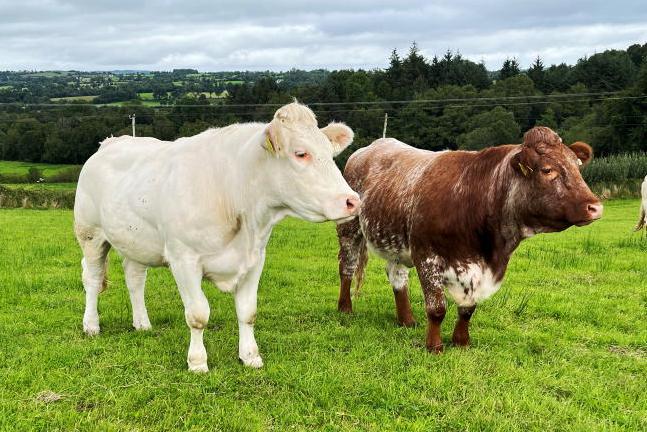

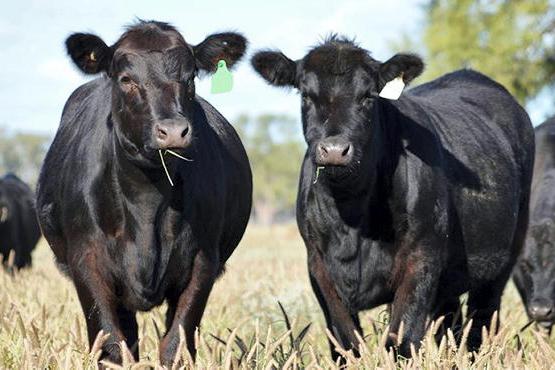
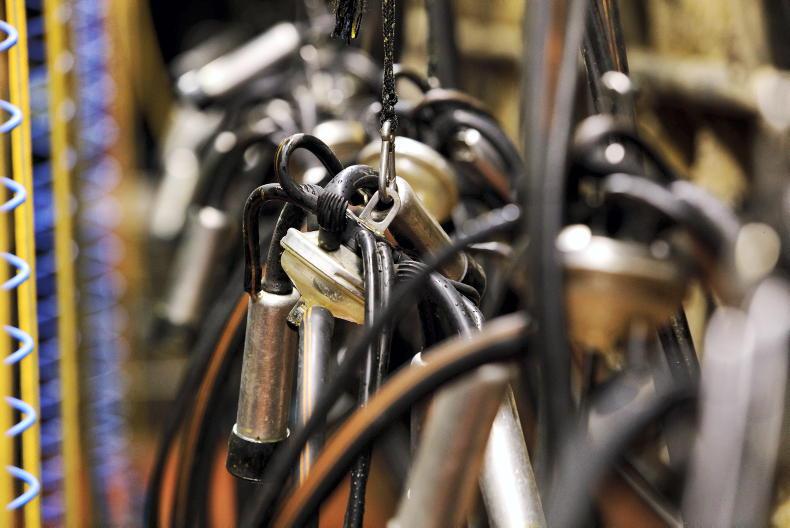
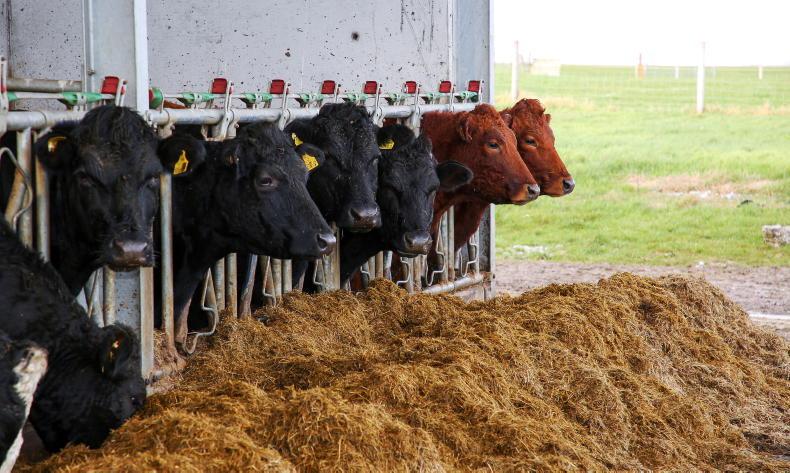
SHARING OPTIONS